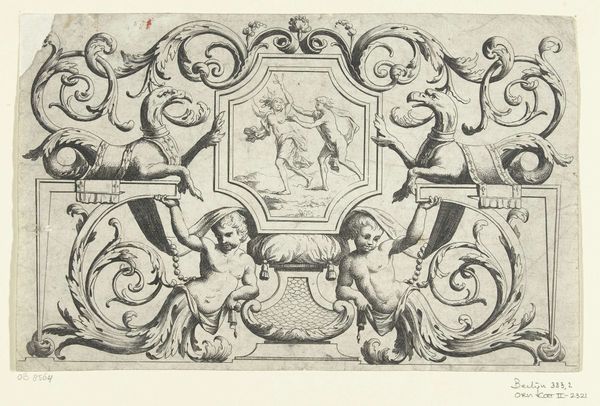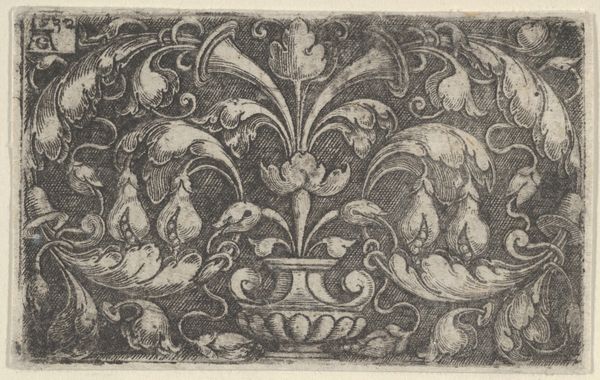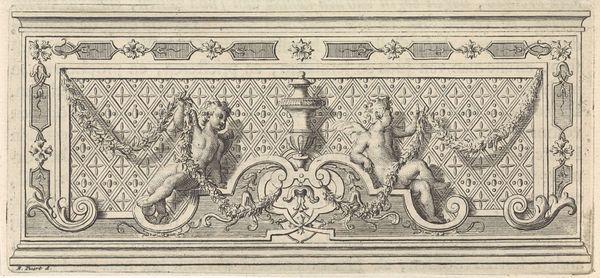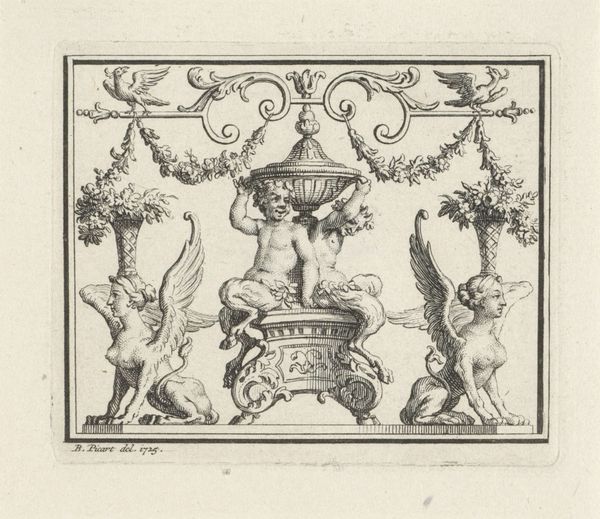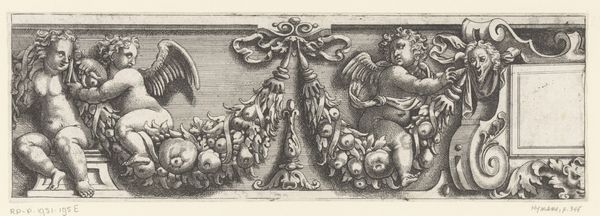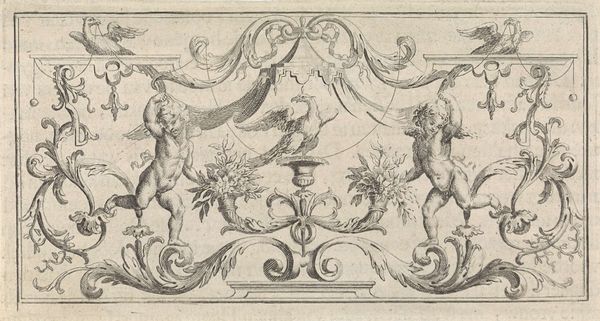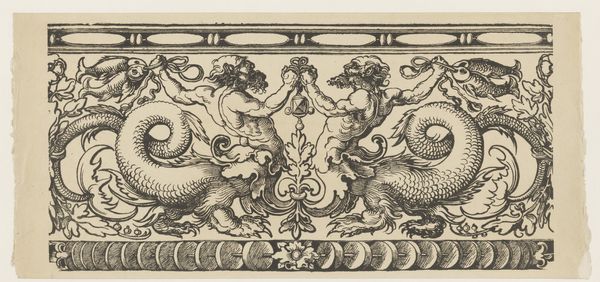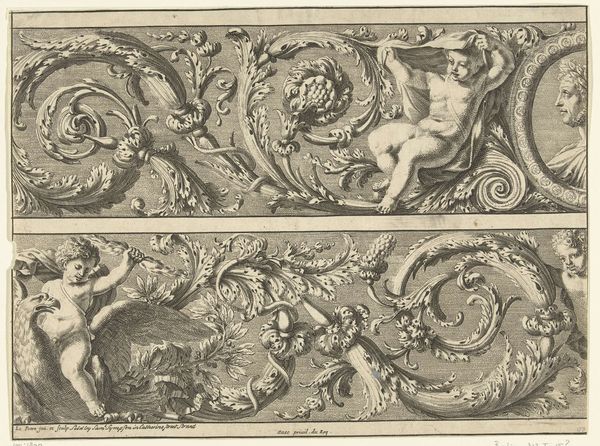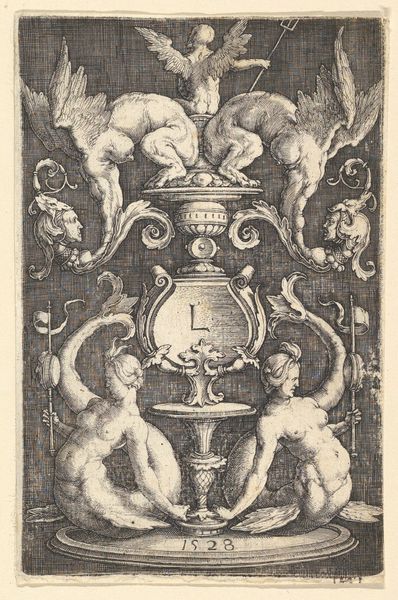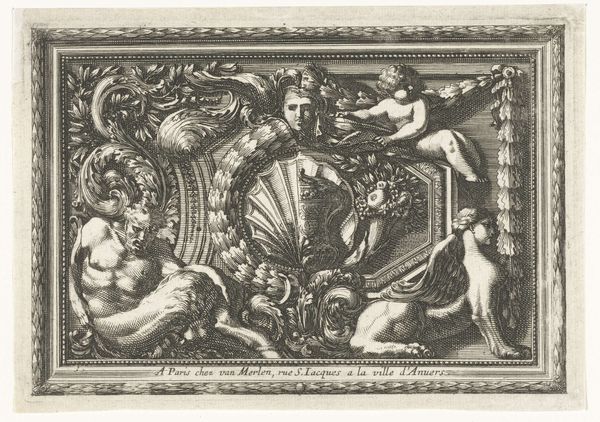
Ornamental frieze with putti, acanthus leaves, and garlands of fruit, from Recueil de Différentes Compositions Frises et Ornements dessinées et gravées à la manière du lavis par La Grenée le Juene Se trouve chez l'Auteur, au Louvre et chez Basan, rue et Hôtel Serpente A Paris, in an album containing Recueil de Compositions par Lagrenée Le Jeune (Collection of Compositions by Lagrenée the Younger) 1784
0:00
0:00
drawing, print, engraving
#
drawing
#
neoclacissism
#
pen drawing
# print
#
pen sketch
#
academic-art
#
decorative-art
#
engraving
Dimensions: Sheet: 15 13/16 × 21 7/16 in. (40.2 × 54.5 cm) Plate: 4 13/16 × 19 3/4 in. (12.3 × 50.1 cm)
Copyright: Public Domain
Curator: This ornamental frieze, etched in 1784 by Jean Jacques Lagrenée, displays a delicate dance of putti amidst acanthus leaves and floral garlands. It is a page lifted from "Recueil de Différentes Compositions Frises et Ornements," which you can find here at the Met. Editor: Oh, it's playful! But restrained, almost melancholic, with that sepia tone. It feels like cherubs are frozen mid-frolic, suspended in time. A ghostly echo of celebration. Curator: Indeed. Its academic style emphasizes controlled execution; even the cherubic frolicking serves a decorative function, speaking to the values of the late eighteenth century. Think ornamentation, interior design—these prints circulated widely, influencing craft production and artistic reproduction. Editor: Reproduction… that’s interesting, the artistic intention lies in the craft or the massification. The design flattens out into two dimensions but gives me a craving to see these forms inflated, brought to life with marble. Imagine that fountain actually spouting water! It also prompts me to question our obsession with capturing "playfulness" or childhood's innocence". Is there darkness in it as well? Curator: Dark chocolate, perhaps? What interests me, as always, are the processes involved. Engraving and printing allowed these Neoclassical ideals to reach a far broader audience than any singular marble sculpture ever could. Each leaf, each cherub carefully translated and disseminated, influencing tastes and design on an almost industrial scale. Editor: Agreed. This piece becomes so interesting as evidence of consumption habits. Now, knowing it was printed at a time when revolutionary ferments roiled France makes my senses ignite. Is this ornamentation is a fragile symbol? It makes one ponder. Curator: Precisely. Consider the conditions of artistic production—the access to workshops, the patronage systems...it speaks volumes about artistic agency. Editor: So it does! A faint, innocent yet strangely charged testament. It makes me think twice about decorative objects and the human conditions of labor around them. Curator: Thank you for lending your sensibility to this print. Now, let's move along and analyze the following work of art...
Comments
No comments
Be the first to comment and join the conversation on the ultimate creative platform.

